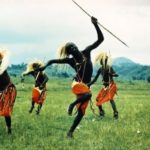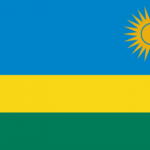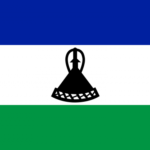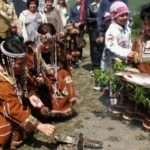Tattoo in africa
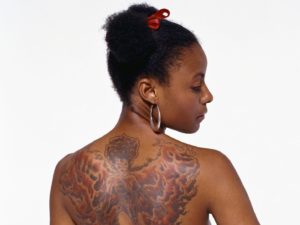 Africa is a continent, for most of which, clothing is needed purely symbolically. The climate of these places allows almost all year round to do without it, if not for the principles of morality. However, for most of the indigenous population, these principles are kept to a minimum, and that is why clothing for them in everyday life consists mainly of a loincloth for men and the similarity of a skirt for women, children usually cost nature to give.
Africa is a continent, for most of which, clothing is needed purely symbolically. The climate of these places allows almost all year round to do without it, if not for the principles of morality. However, for most of the indigenous population, these principles are kept to a minimum, and that is why clothing for them in everyday life consists mainly of a loincloth for men and the similarity of a skirt for women, children usually cost nature to give.
But the proverb: “They meet according to their clothes …” is also valid for those who have minimum clothes. That is why ancient African tribes all over the world decided to decorate their bodies with various patterns.
Many ancient people for these purposes used a different paint, which held on the skin for a long time. So the American Indians applied war paint only for the duration of the hostilities, and the wedding drawings of the Hindus were made only for the duration of the marriage, then the Africans went further. They painted their face and body with beauty, and then with needles they stuck this beauty into the skin tissue. Such drawings were kept on the body of a person throughout his life. These drawings are called tattoos.
Since ancient times, it has become a custom on the Black Continent to make tattoos for almost everyone. By drawing tattoos, you can determine from which tribe this person is, and at what level of hierarchy he stands in his tribe. Tattoo was a kind of calling card. What did Africans need it for?
And everything is simple, and for them the tattoo is both an ornament and a kind of business card that showed any comer who he was, what kind of tribe he was, what his position in society was, what his social status was. As Europeans determined the nobility of a man by their clothes and hairstyle, so too did Africans by tattooing learn who was in front of him and how to treat him.
Well, and since the African climate allows us to show drawings on our bodies all year round, these decorations have become common to all. Africans have made the process of tattooing a real art, achieving unsurpassed skill in this.
In general, tattoos are not considered purely feminine or masculine decorations. They are used by both men and women, the only difference is in the drawings and the places of their application. By drawing men you can determine that in front of you is a warrior or a simple hunter. The leader and his relatives have special drawings; only the leader’s family can wear them. Seeing such a picture on the body, even the representatives of another tribe are obliged to pay him homage.
In women, by drawing, one can determine whether she is married or not, what is the status of her husband in society, and even how many children she has. If a woman has been married several times, it is also reflected by tricks on her body. In many tribes, this is a reason for respecting or not being very respectful of her.
Different tribes have their own technology for making tattoos and their drawings. They used and now apply different types of tattoos: tattoo, piercing, applying certain scars. With Africans living in northern parts of Africa who have fair skin, along with tattoos, mehendi is popular.
In most tribes, tattooing usually has a special ritual character. It is performed as a kind of sacred rite. This is done by special people admitted to this, with the selected members of the tribe present, often the shaman performs a certain ritual (also, check Interesting facts about tattoos).
A variety of tattoos is very large. So some tattooed on the hands or thighs, others on the head and chest are made scars. So in the gang tribe drawings are applied on the chest, back and arms. What is considered beautiful and necessary in some tribes, in others it is not accepted, so in the Yaoundé tribe, in Cameroon, women were previously prescribed to have scars on their hips, in other tribes it is considered unlawful.
Tattoos are made in children. Moreover, for this they use some natural dyes, as well as ashes or even saltpeter. Such tattoos persist for life and they almost can not be reduced.
Tattooing in Africa was both popular in antiquity, so is modern and popular. A man with patterns on the body is not surprising, but on the contrary it is a full-fledged member of society who demands a certain respect for himself. It is their morals. Although over time, tattoos have become popular with many people around the world. If several decades ago our tattoo was mainly an attribute of the zone and “gentlemen of luck”, well, sometimes these marks were used by those who served in the army, now tattoos are very common in young people and in the cosmetic business there is a whole direction that is in high demand.
On the beach you can meet as many young people as you want, including girls and women with tattoos on different parts of the body, and this is not considered shameful, but rather attracts attention.









